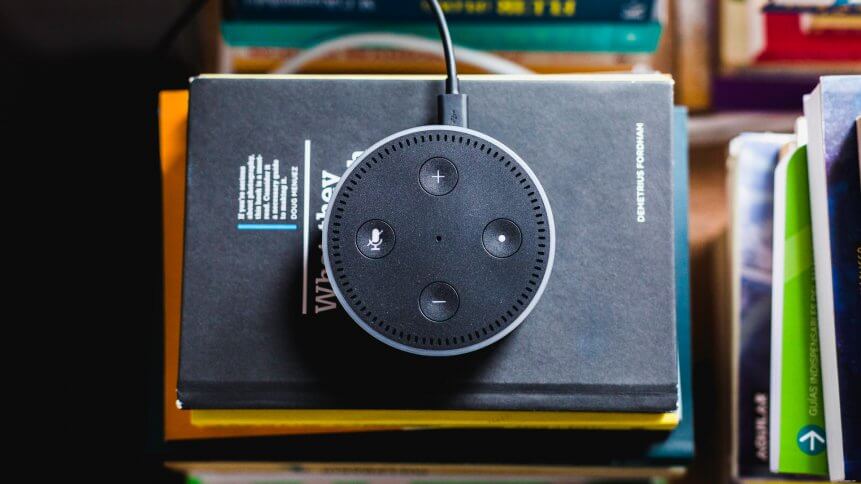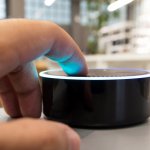Why voice technology has enjoyed a resurgence during the pandemic

- In 2019, up to 141 million voice control smart home devices were shipped globally
- More than half (60 percent) use voice technology like smart assistants to engage with news content
- Voice technology is set to increase in adoption post-pandemic
About a quarter of UK homes now have a smart speaker, and according to Ofcom, 7.1 million people in the UK listen to podcasts on a weekly basis.
In a busy, time-poor world, digital technology and the internet has re-empowered audio as a means to access information. For a generation of users that are ready for new, convenient ways to interact with tech as they go about their day, and often consume audio digital content via home speakers, voice-based technologies continue to gain traction and acceptance.
But while this technology continues to enjoy more popular use, it’s seeing a further boost in uptake, as the ‘unprecedented’ lockdowns around the world mean people are spending much more time in their own homes, and these changing habits now could be a boon for voice technology adoption in the longer term.
According to ABI, 141 million voice control smart home devices were shipped worldwide last year, and this number is predicted to increase globally by up to 30 percent this year.
ABI Research analyst Jonathan Collins added that the ongoing pandemic is likely to provide “additional motivation and incentive for voice control in the home that will help drive awareness and adoption for a range of additional smart home devices and applications,” in a report by The Jakarta Post.
Home assistants aren’t just sitting there idly. As new, engaging applications are developed and many individuals continue to work from home, a fifth of users have actually doubled their use of the technology in recent months according to Voxly Digital and are using it for a growing list of reasons.
Voxly Digital’s survey revealed that users of voice-based home assistants have been engaging with the technology more than ever and now use it for a growing list of purposes, “to entertain them; to supply them; to support them; to keep them fit and to act as a window to the wider world.”
The new role of voice-based home assistants
Ultimately interactive voice technology has huge applications across education, entertainment, health and fitness, shopping, and information queries, like ‘where can I get pizza tonight?’
Voxly noted that there’s been a 10 percent rise in consumers using voice-based technology for shopping, while 39 percent of users are also using voice-based technology to find out local information on a daily basis, with nearby activity searches like hiking going up 26 percent.
In comparison with all of the above, the highest rate of engagement with voice technology falls is listening to news and current events. A climb from 39 percent to 60 percent was found in users tuning in to the news with voice technology on a daily basis.
Capitalizing on the increased usage of voice-based home assistance, Amazon is offering a year’s worth of free subscription to Food Network Kitchen. The Food Network Kitchen app includes a list of live, on-demand cooking classes fit for smart TVs and an audience stuck at home.
As Alexa and Google Assistant consistently prove their value in homes, helping users cope with the lockdown, it is likely to the use of voice-based technology will continue past the pandemic. This prediction coincides with 40 percent of respondents telling surveyors that they will continue using their voice assistants and perhaps even more after the lockdown is lifted.
Voxly Head of Strategy, Rozzi Meredith, commented that the time and willingness of users to engage and explore the functions of voice technologies will continue to generate interests among users.
“We expect these trends to continue after the lockdown is over. Less experienced users have had more time to explore and get to know how these services work, with more than half telling us they ‘feel more confident’ now using voice,” Meredith said.
Consumer trust built and established using their voice-activated home assistants will drive buyer confidence towards these devices in the business world. As voice-inspired technologies become ubiquitous in our homes, it is only natural for users to expect an uptick of this technology in other parts of their lives, beyond the parameters of home, especially when quarantine measures are lifted.
Chris Pennell, a Futuresource analyst, predicted we would see a growth of digital assistants in consumer-facing areas such as healthcare, retail, and entertainment.
A recent example is Mayo Clinic’s use of Alexa to help patients and the public access the latest information on COVID-19.
“The ‘Mayo Clinic Answers on COVID-19’ skill for Alexa offers the latest information on symptoms, prevention and how to cope in a hands-free way using only the voice ― a fact that is especially important when we’re trying to reduce the spread of a virus transmitted by physical contact,” said Sandhya Pruthi, M.D., a Mayo Clinic physician and medical director for Mayo’s Health Education and Content Services.
“With a rapidly developing pandemic like COVID-19, delivering trusted health information on how to respond to our patients and the public is critical,” Pruthi added.
The apparent uptick in voice technology is another reminder of just how much things have changed in the last few months. Consumer behaviors are being tangibly impacted, and there is an openness to explore new methods of interaction with the technology and information around us.
Many individuals have been stuck within their own homes, staring at screens and typing and clicking all day – voice technology is proving itself as a welcome break from that.










